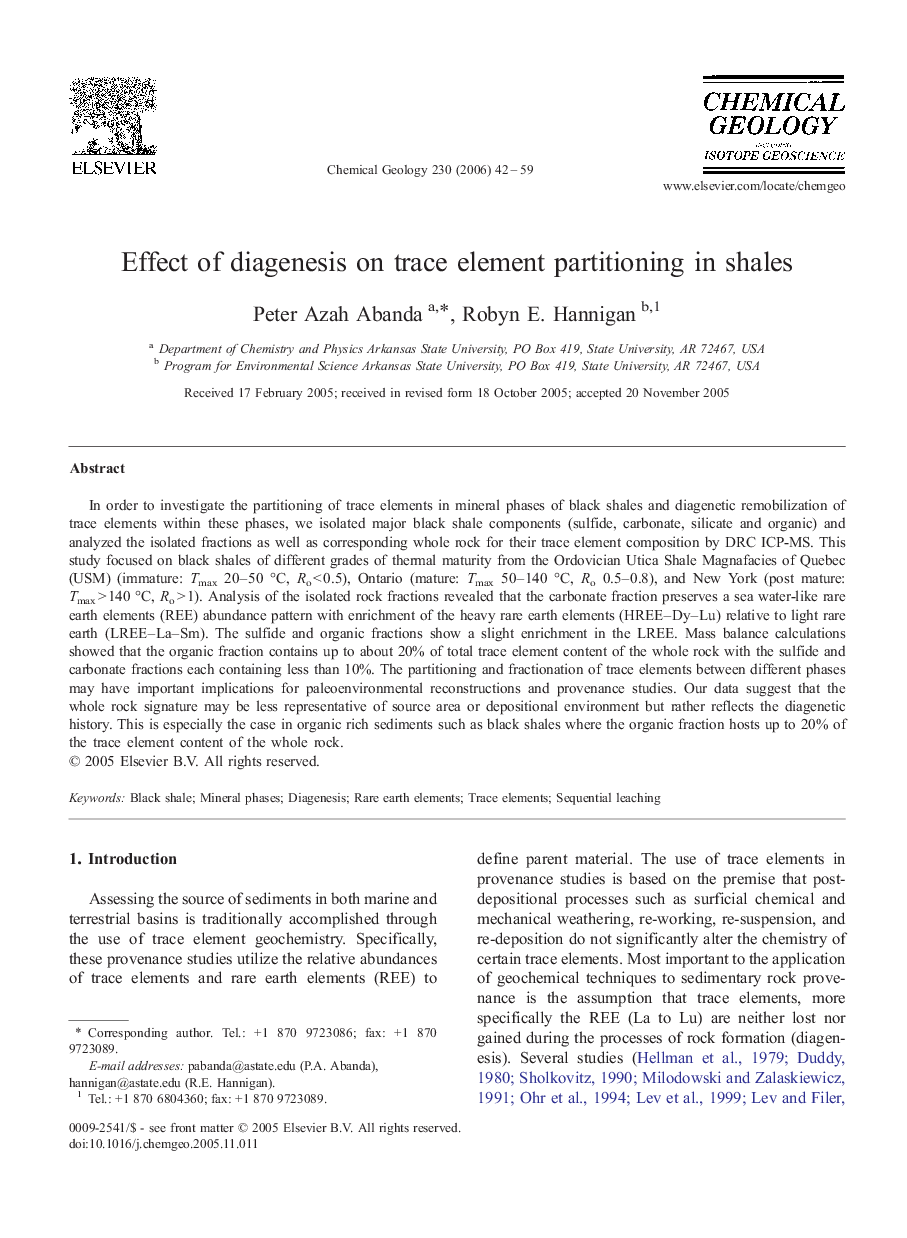| کد مقاله | کد نشریه | سال انتشار | مقاله انگلیسی | نسخه تمام متن |
|---|---|---|---|---|
| 4701226 | 1637769 | 2006 | 18 صفحه PDF | دانلود رایگان |

In order to investigate the partitioning of trace elements in mineral phases of black shales and diagenetic remobilization of trace elements within these phases, we isolated major black shale components (sulfide, carbonate, silicate and organic) and analyzed the isolated fractions as well as corresponding whole rock for their trace element composition by DRC ICP-MS. This study focused on black shales of different grades of thermal maturity from the Ordovician Utica Shale Magnafacies of Quebec (USM) (immature: Tmax 20–50 °C, Ro < 0.5), Ontario (mature: Tmax 50–140 °C, Ro 0.5–0.8), and New York (post mature: Tmax > 140 °C, Ro > 1). Analysis of the isolated rock fractions revealed that the carbonate fraction preserves a sea water-like rare earth elements (REE) abundance pattern with enrichment of the heavy rare earth elements (HREE–Dy–Lu) relative to light rare earth (LREE–La–Sm). The sulfide and organic fractions show a slight enrichment in the LREE. Mass balance calculations showed that the organic fraction contains up to about 20% of total trace element content of the whole rock with the sulfide and carbonate fractions each containing less than 10%. The partitioning and fractionation of trace elements between different phases may have important implications for paleoenvironmental reconstructions and provenance studies. Our data suggest that the whole rock signature may be less representative of source area or depositional environment but rather reflects the diagenetic history. This is especially the case in organic rich sediments such as black shales where the organic fraction hosts up to 20% of the trace element content of the whole rock.
Journal: Chemical Geology - Volume 230, Issues 1–2, 12 June 2006, Pages 42–59